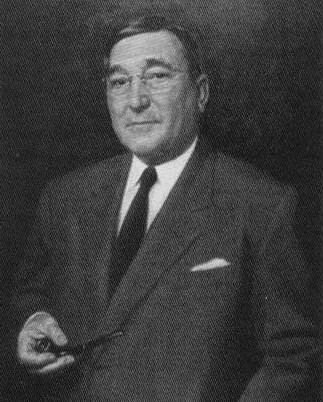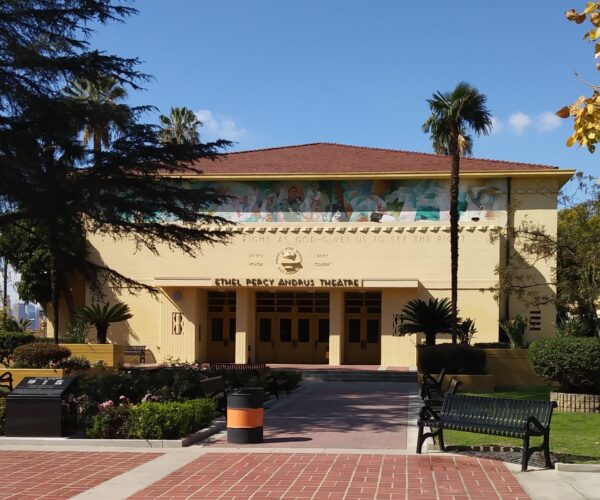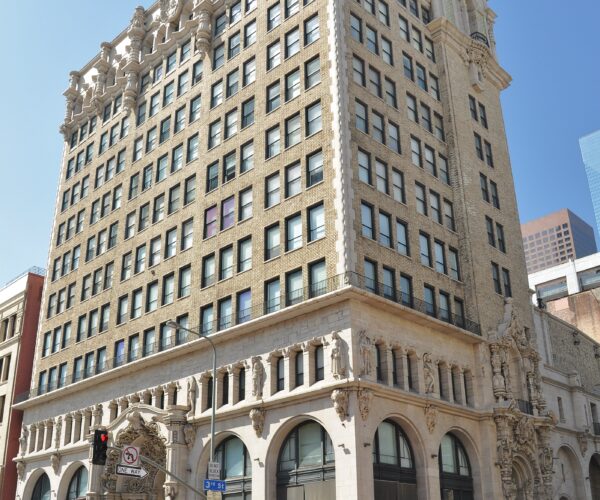Architect
Albert C. Martin, Sr.

Photo: Genbridges, via findagrave.com
Albert C. Martin, Sr. (1879-1960)
Patriarch of one of the oldest and most prolific architecture firms in Southern California, Albert C. Martin saw opportunity in the open fields of a fledgling city.
In 1904, twenty-five-year-old Albert C. Martin arrived in Los Angeles from La Salle, Illinois. He had a degree in architectural engineering from the University of Illinois, a few years of construction experience, and fifteen dollars in his pocket.
By 1906, he had received his first big assignment: head of construction on the massive Hamburger Department Store, designed by Alfred Rosenheim. By 1908, Martin had established his own architectural and engineering practice.
Martin’s first major commission was the Million Dollar Theatre building (1918) at Broadway and Third Street. The office building’s ground floor housed the Million Dollar Theatre, Sid Grauman’s first Los Angeles venue. For the theatre auditorium, Martin designed the world’s first cantilevered balcony made out of reinforced concrete.
The boom of the twenties brought A. C. Martin dozens of church, office, and municipal building commissions. Highlights include St. Vincent de Paul Roman Catholic Church (University Park, 1926), Santa Monica’s Catholic Church (Santa Monica, 1926), and Los Angeles City Hall (Civic Center, 1928, designed along with John Parkinson and John C. Austin). At the time, one hundred people were on the firm’s payroll.
Martin’s firm survived the Great Depression in part because of the rebuilding effort after the 1933 Long Beach Earthquake. This not only guaranteed work for A. C. Martin; it cemented it as one of the leading firms with expertise in seismic design. “As disastrous as the earthquake was, it was a blessing not only for architects and the contractors but for the industry because it reshaped their entire engineering formulization of building construction,” recalled his son, Albert C. Martin, Jr.
In the latter half of the 1930s, the private sector started to reemerge from the freefall of the Depression and set its eyes on expansion. In 1938, A. C. Martin was selected by the May Company to design a new flagship department store on the corner of Wilshire Boulevard and Fairfax Avenue, in the then-nascent Miracle Mile. Martin, along with Samuel Marx of Chicago, designed what would become one of the finest examples of Streamline Moderne architecture in Los Angeles.
Albert C. Martin, Sr. died on April 9, 1960. Martin had gradually ceded control of the firm to his sons Albert, Jr. and Edward shortly after World War II. The firm was renamed A. C. Martin and Associates, later ACMA. Now known as AC Martin Partners, the firm is in its third generation of family leadership, with grandsons David and Christopher.
Related Places
-

Place
Lincoln High School
Lincoln High played a key role in the East L.A. Chicano Student Walkouts (Blowouts) of March 1968. -

Place
Million Dollar Theatre